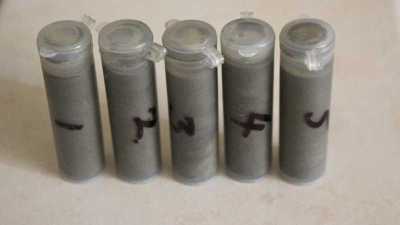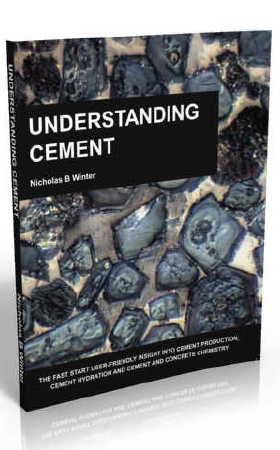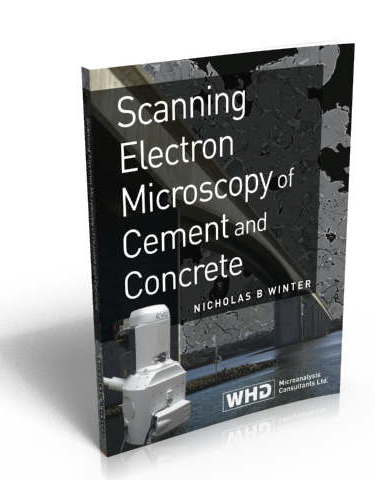
Fine Limestone in Cement:
Cheap Inert Filler or Beneficial Reactant?
Essential viewing for anyone with technical oversight of cement manufacturing, concrete mix design/production or concrete petrography
There still seems to be some confusion about whether fine limestone in cement (up to about 5% as permitted by eg: US and European standards) is an inert filler, or whether it is chemically reactive and contributes to the cement hydration products. I have even heard cynics make the scurrilous suggestion that it is just a cheap filler added to bulk out the cement. Are they right - surely not?!
Actually, the cement scientific literature has been clear on this for some years, but I am still often asked about it. So, to clarify the issue, here is the "Understanding Cement" experiment designed to give a final answer.
I thought it might be fun to do this as a video, showing the stages of preparation of a lab cement (necessary because, here in the UK at least, it is almost impossible to get a Portland cement that does not contain fine limestone, and I needed this for the control mix) and examination of three-month-old pastes in the scanning electron microscope using quantitative X-ray microanalysis and interpretation of the results.
The result is absolutely clear-cut and definitive, with no wishy-washy "maybes" and "possiblys"!
The final part of the video also looks at whether this actually matters, and suggests one particular "type" of concrete in which it might indeed matter. A lot.
A "cheat sheet" that gives a one-page summary of the video is available on the Cembytes Resources Page - see below. There's also some additional information below that may help with interpreting the plots of X-ray microanalysis data shown in the video.
The video is about 20 minutes long and contains some scenes of cement chemistry.
Locations of pure phases on atomic ratio plots
AFm Monosulfate (C3A.CaSO4.12H2O)
No. of atoms: Si=0; Ca=4; Al=2; S=1
Si/Ca=0; Al/Ca=0.5; S/Ca=0.25 (NB: “A” in cement chemistry notation=Al2O3)
AFm monocarbonate (C3A.CaCO3.11H2O)
No. of atoms: Si=0; Ca=4; Al=2; S=0
Si/Ca=0; Al/Ca=0.5; S/Ca=0
Ettringite (C3A.3CaSO4.32H2O)
No. of atoms: Si=0; Ca=6; Al=2; S=3
Si/Ca=0; Al/Ca=0.33; S/Ca=0.5
Calcium hydroxide (CH, Ca(OH)2)
Si/Ca=0; Al/Ca=0; S/Ca=0
Calcium silicate hydrate (C-S-H)
No fixed composition, but approx. ratios are: Si/Ca=0.5-0.6; Al/Ca=0.04-0.07; S/Ca=0
Click Here to Download the One-Page Summary Cheat Sheet
Update

Following on from the video, I now have five more samples:
- Control cement (ground clinker plus gypsum)
- Cement plus limestone aggregate
- Cement plus fine limestone plus limestone aggregate
- Cement plus dolomite aggregate
- Cement plus fine limestone plus dolomite aggregate
I'll have a look at them using the same techniques as in the fine limestone video. As soon as there are some results, I will let you know via Cembytes.
Also in preparation: the second of a two-part video on ASR as seen using the SEM. The first ASR video is available here. Again, when it is available, I'll let you know via Cembytes. Sign up here for Cembytes if you haven't already!

